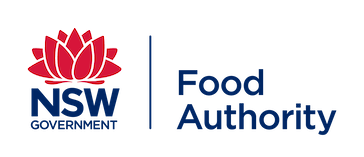Phytoplankton and Biotoxin
Phytoplankton and biotoxin monitoring commenced in 2004, with regular routine sample data collected from 2005. This risk assessment reviews the presence of potentially harmful species and positive biotoxin results during the life of the current program.
Phytoplankton are microscopic organisms that are the primary producers at the base of the food chain in almost all aquatic ecosystems. Some phytoplankton produce toxic compounds that can accumulate in filter-feeding bivalve shellfish and can be harmful to humans, if consumed.
In each shellfish aquaculture producing estuary in NSW, local shellfish programs collect samples for phytoplankton and biotoxin analysis to monitor for potential risks from toxic phytoplankton. During the open harvest status, fortnightly phytoplankton sampling and monthly biotoxin sampling is conducted in accordance with the NSW Marine Biotoxin Management Plan and carried out in National Association of Testing Authorities (NATA), Australia accredited laboratories.
Water samples are scrutinised for the presence of potentially harmful species and shellfish flesh is tested for the three main algal toxin groups found in NSW coastal waters: amnesic shellfish toxin, paralytic shellfish toxins and diarrhetic shellfish toxins.
The report assessed 22,203 flesh tests for biotoxin analysis, along with 15,082 water samples for phytoplankton enumeration between January 2004 and December 2016.
Results
Regulatory limits for algal biotoxins were exceeded during two separate bloom events. An anomalous and immense bloom of the amnesic shellfish toxin-producing Pseudo-nitzschia cuspidata occurred in Wagonga Inlet during 2010. Thirteen biotoxin samples from this event exceeded regulatory limits for amnesic shellfish toxin (Domoic acid) in Sydney rock oysters.
During 2016, regulatory limits for paralytic shellfish toxins were exceeded in nine blue mussel samples collected from Twofold Bay during a bloom of Alexandrium spp. on the NSW south coast. No illnesses in seafood consumers were reported from either event.
Since 2012, quantitative methods of biotoxin analysis are available where a value for toxin concentration in shellfish tissue (if present) is reported, rather than a positive or negative result only.
With regards to routine biotoxin risk assessment this enables a better-informed approach for management of shellfish aquaculture programs, including a faster return to harvest on some occasions, and potential public health risks.
Full results are available in the report below.
Phytoplankton and Biotoxin Risk Assessment October 2017 (pdf, 1.19MB, 48pp)

